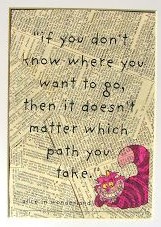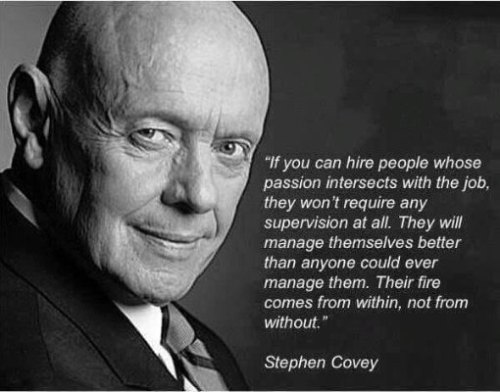Declaring a Major or Going in Undeclared – an Expensive Decision
 Entering college is without question one of the most exciting and fun times for young adults and their parents. Many tasks have been completed to get to this point. Often, however, declaring a major is not one of them.
Entering college is without question one of the most exciting and fun times for young adults and their parents. Many tasks have been completed to get to this point. Often, however, declaring a major is not one of them.
The Economic Impact of Being Undecided
The following is pulled from the book, College Planning for Busy Parents: A Guide to Affordable Colleges, Financial Aid, Scholarships, and Tax-Saving Strategies, by Troy Onin.
Dan Johnston does college aid presentations and workshops at over 50 high schools each year as the Regional Director of Pennsylvania’s Higher Education Assistance Agency (PHEAA). One of his most frustrating examples of bad college advice is: “If you don’t know what major you want, go as an undeclared student. You can decide on your major after a few basic courses.”
Johnston says that, “For most students that is the worst advice possible. Granted, there will always be students whose best initial choice is undeclared, but they represent a very small percentage of students. The idea that a large number of students without a career plan can take a few basic courses, then suddenly ‘find’ themselves (to the tune of $20,000 to $50,000 per year), is sadly pathetic and needlessly expensive.”
The Bottom-Line
For those of you that just want the bottom line message from this article, here it is. Going into college with your major undeclared is not only a bad strategy, it is unnecessary. It will potentially be costly in money, time and self-esteem. The same can be said if a student chooses a college major and career direction while in high school – if approached in a wrong way. It is with extreme prejudice that this author believes it is very possible to graduate with a double major in four years. Some exceptions to this rule exist but for most employers, a student with a double major is much more attractive than the college grad with a single major.
The Career Coaching for Students™ program uses highly valid, reliable assessments in an appropriate way to support a proven approach to student career exploration, choosing a major, choosing a career and addressing student needs (see Tiedeman and Perry theories related to student career development below).

The Facts about students, choosing a major and choosing a career
In an article by Gayle Ronan, she describes how college freshmen face a major dilemma. Ronan points to a statistic offered by Dr. Fritz Grupe. “Eighty percent of college-bound students have yet to choose a major their senior year of high school. But they are still expected to pick schools, apply to and start degree programs without knowing where they want to end up. It is little wonder 50 percent of those who do declare a major, change majors — with many doing so two and three times during their college years, according to Grupe.”
Liz Freedman, student employment coordinator for Internship and Career Services at Butler University in Indianapolis, Indiana, authored an excellent article posted in the Penn State Academic Advising Journal, The Mentor, entitled The Developmental Disconnect in Choosing a Major: Why Institutions Should Prohibit Choice until Second Year.
Rather than accept the argument presented in the article for delaying declaration of a major until the students’ college sophomore year, I will present relevant portions of the article here (excellent insights for parents come from the article) and respond with a solution that counters the argument and accelerates student development while in high school.
To be clear, without a solution in high school, I have to agree with the argument that Freedman presents to prohibit declaration of a major until the sophomore year of college. However, delaying declaration of a major but maintaining the status quo in career advising [as it is at most universities] will NOT result in better outcomes for students.
In her article, Freedman quotes E. St. John, “There is, perhaps, no college decision that is more thought-provoking, gut wrenching and rest-of-your-life oriented — or disoriented — than the choice of a major” (St. John, 2000, p. 22). This idea exemplifies the fact that choosing a major is a choice that should be intentional and based on knowledge of one’s self, and when the wrong choice is made, the implications can be harsh.
Ideally, we can all agree that the right major will lead to academic success, as well as fulfill academic, personal, and vocational goals. College and university administrators have begun implementing various types of institutional resources to assist undecided students when choosing a major, but most students are still likely under-prepared when choosing a major – no matter when they choose.
The Data
An estimated 20 to 50 percent of students enter college as undecided (Gordon, 1995), and an estimated 75 percent of students change their major at least once before graduation (Gordon, 1995). The statistics show that choosing a major has serious implications for the majority of students, not just undecided ones. Unfortunately, few of the decided students are basing their decision of major on factual research and self-reflection. According to a College Student Journal survey of more than 800 students asked to elaborate on their career decision-making process, factors that played a role included a general interest in the subject; family and peer influence; and assumptions about introductory courses, potential job characteristics, and characteristics of the major (Beggs, Bantham, & Taylor, 2008, p. 382). While these may be valid factors in degree choice, the study ultimately implied that students are choosing a major based on influence and assumption rather than through an understanding of their own personal goals and values.
Lastly, the choice of major significantly impacts the student experience, both positively and negatively, affecting retention, engagement, student learning, academic standing, setting of academic and career goals, and more. For example, in a 2006 Canadian study, researchers followed 80,574 students in 87 colleges during a five-year period and showed that high academic grades are related to having a major close to one’s personality which can be described as congruence. Most impressively, they found that congruence better predicted overall grade-point average (GPA) after five years than ACT scores (Jones, 2012).
The development STAGES of first-year students
 In contrast with the evidence that first-year college students are most likely making uninformed choices when determining a major, the common four-year college curriculum path assumes that students enter college prepared to make a decision regarding major and, ultimately, career path. Unfortunately, the reality is that students are most likely not developmentally prepared to do so. According to Perry’s student development stages, students in their first year will experience dualism, in which the world around them is made up of dichotomies (good vs. bad, right vs. wrong, yes vs. no, etc.).
In contrast with the evidence that first-year college students are most likely making uninformed choices when determining a major, the common four-year college curriculum path assumes that students enter college prepared to make a decision regarding major and, ultimately, career path. Unfortunately, the reality is that students are most likely not developmentally prepared to do so. According to Perry’s student development stages, students in their first year will experience dualism, in which the world around them is made up of dichotomies (good vs. bad, right vs. wrong, yes vs. no, etc.).

Perry’s College Student Development Stages
Students in the Dualistic stage believe there is one right answer for everything, including the choice of major (Evans, Forney, Guido, Patton, & Renn, 2010). Dualistic students believe there is one “right” major for them, and they tend to look to others for the answer (adviser, parents, peers, and faculty) rather than draw conclusions based on their own research, personal goals, and self-reflection. Most first-year college students are still attempting to understand their own identity, and having lived a majority of their lives under someone else’s guidance, they may not yet be able to come to legitimate conclusions about themselves. This raises the question, without knowing one’s self, even after a year in college, how can one effectively choose a major?
Based on the understanding that most high school and first-year college students are in the dualistic stage of development, it makes sense that students receive assistance navigating a decision-making process. According to David Tiedeman’s approach to decision-making, these students will begin college in the exploration stage, considering random, exploratory options (as cited in Harren, 1976).
The cornerstones of Tiedeman’s career construction theory unites the concepts that career emerges from self-organization, purposeful action bridges discontinuity, and decisions evolve through differentiation and integration.
According to Tiedeman’s approach to career development, in the process of making a decision, an individual progresses through seven sequential stages: (1) exploration, (2) crystallization, (3) choice, (4) clarification, (5) induction, (6) reformation, and (7) integration. Tiedeman identifies eight decision-making styles: planning, intuitive, impulsive, agonizing, delaying, paralytic, fatalistic, and compliant. Planning is viewed as the most effective style with intuitive sometimes being effective.
In Tiedeman’s Exploration stage, little to no progress is made toward a choice, because knowledge of one’s self and the professional world is needed but not yet understood, and students may feel anxiety about making life choices. Since incoming students are both dualistic and in the exploratory process of decision-making, they may not yet be developmentally ready to make important life decisions without a structured period of self-reflection, learning, and growth. When making decisions independently or based on the opinions of those with whom they have a personal relationship, such as family members, students will most likely make an uneducated, unrelated, and ineffective decision not based on their true personal goals, interests, and values.
The OBVIOUS disconnect
According to the academic experts, most incoming students are not developmentally ready to make effective decisions such as choosing a major based on identity, self-reflection, and career path. To emphasize this gap, those in the employment field are starting to advise that students follow a double-major strategy to achieve the greatest marketability upon graduation.
Those in the employment field are starting to advise that students follow a double-major strategy to achieve the greatest marketability upon graduation.
Some students “end up” with a double major due to changing interests, but that usually leads to extended semesters beyond the traditional four years. However, if a student enters with a clear direction and establishes a double major as an incoming freshman, it is very likely they will be successful within the traditional four years.
…If a student enters with a clear direction and establishes a double major as an incoming freshman, it is very likely they will be successful within the traditional four years.
Another look at Perry’s stages of development shows that the earliest point at which students may be able to effectively choose a major is not until the stage of multiplicity (Evans et al., 2010). The key here is to understand that the Multiplicity stage is not age-dependent.
Multiplicity signifies the ability to recognize that various options exist when one right answer is not known. In this stage the student may be ready to narrow their major preferences, but it may not be until even further in development (the relativism stage) that students can truly begin deciding based on what they know about themselves. Furthermore, Tiedeman’s decision-making process argues that after the exploratory phase is the crystallization period (as cited in Harren, 1976). Here the student can begin making progress toward a decision but does not actually make one. For example, the student can effectively begin weighing the advantages and disadvantages of a particular decision, consider other alternatives, and understand some of the consequences of these alternatives. Clearly, there is a serious disconnect between where traditional freshmen students are developmentally and the level of development needed to make a successful choice in major. If choosing a major actually means choosing one’s goals, values, and interests based on intentional self-reflection and understanding of one’s self, then most first-year students are not ready. But some are.
There are solutions
Fortunately, it is not all bad news; there are practical solutions to address this inherent disconnect. Experts agree that high school summer career exploration and planning programs that incorporate a heavy “assess and reflect” focus using valid and reliable assessments followed by an intentional and effective step-driven exploratory approach will eliminate the gap – and empower the student to make an informed choice of major – before they enter their freshmen year of college. For those students that don’t have that opportunity, the experts agree that implementing a first-year college program is paramount – but few colleges and universities do this well according to student feedback.
For some universities, there is a mis-directed desire to change the terminology we use about pre-major students from “undecided” to “exploratory” students or something similar rather than implement a sustainable and effective career exploration and planning program. 
Colleges and universities are failing to assist students who are unprepared to effectively choose a major. Therefore, truly assisting students in making well-informed life choices will require systemic changes in institutional structures and processes.
Some academic advisors believe prohibiting a major choice until the sophomore year is the most responsible option. To do this, there would need to be a mandatory course or program during the first year, and a “total intake academic advising model” would be required in which students in their first year receive counseling from an objective, central career coaching office (coaching model) and it is not until the second year that students will be advised within a specific academic discipline, such as with a faculty adviser (King, 2008). A structure such as this may offer first-year students career assessments, a relevant and effective career exploration process, personal research intensive opportunities in areas of study, job shadow experiences, informational interviewing guidance, personal reflections writing, upper-level classes observations, and faculty interviewing.
But all of this already exists – if the student is given the properly designed program and support – during high school. Students as young as incoming 9th graders (freshmen in high school) have demonstrated the cognitive ability to leverage a program that addresses all of the points made by Perry and Tiedelman. In fact, most high school students who have participated in the Career Coaching for Students™ program have demonstrated complete ability and competency to leverage the program.
 The Best Solution
The Best Solution
The significant disconnect identified in this article and the fact that colleges and universities are far from delivering a solution was the motivation behind the development of the Career Coaching for Students program, developed by Carl Nielson, an executive coach and organizational development consultant with over 20 years in human resource management. “I initially developed this program in 2007. As of 2015, it has been delivered to thousands of students through high school sponsored programs, local public workshops and one-on-one in family homes and webinars throughout the United States. The “distance-coaching” webinar-based program has been received very positively with reports of consistent student success and enjoyment. Students in India and China have also participated in the program along with U.S. students via webinars.” stated Nielson. But we’ve hardly scratched the surface.
“Perry’s stages of development and Tiedeman’s work around decision making are important for parents to understand, states Nielson. “The Career Coaching for Students program moves the student through the multiplicity stage (the ability to recognize that various options exist when one right answer is not known) and relativism (students can truly begin deciding based on what they know about themselves). The program also supports the development of the students decision-making skill based on Tiedeman’s decision-making process. The student is able to work through the exploratory phase and make significant progress in the crystallization period where they begin making progress toward a decision but do not actually make one. The student begins weighing the advantages and disadvantages of a particular decision with the use of a SWOT (strengths, weaknesses, opportunities and threats) analysis, considers other alternatives, and understands some of the consequences of these alternatives. The truth is that I was describing the Career Coaching for Students program as a Decision Making Skills Workshop several years ago, well before I stumbled onto David Tiedeman’s research. Between the solid alignment to theoretical research and extremely biased positive feedback from students and parents, I believe Career Coaching for Students™ is the only solution for high school students at this time.”
Conclusion
It is not only possible, it is essential that high school students be given the opportunity to develop in ways that position them to make good life decisions, including choosing a major and career before spending thousands of dollars and risking self-esteem. You are encouraged to take advantage of the Career Coaching for Students Self-Directed Home Study offering (high school or college level version) – which includes three hours of one-on-one coaching. This program is available for customized implementation within a high school’s core curriculum or as an after-school program.
Would you like to discuss the program in more detail with Carl Nielson? Click here.
Carl Nielson is Chief Discovery Officer of Success Discoveries and Managing Principal of The Nielson Group, an organizational development consulting firm that provides executive development coaching, team development and assessments for hiring. As creator of the Career Coaching for Students program for high school students and Career and Success Skills Mastery for College Students and Recent Grads, Carl has helped thousands of students find a better way through the career exploration process that works.
 Conducting a job search with a plan
Conducting a job search with a plan The final subject is methodologies and the Receptive and Structured folks operate in a very diametrically opposed way. Those who are Receptive are driven by new ideas, methods and opportunities that fall outside a defined system of living. These are the doers who like to dive into a project, usually before they have all the information needed to complete the task. They rebound quickly and make many spontaneous judgement calls, often trusting their gut feelings. The Structured person loves traditional approaches, routine and proven methods. They live by the mantra “if it’s not broken, don’t fix it.” Structured people believe what they believe and they are willing to go to great lengths to defend it. Change, especially quick and regular change, makes a Structured person uneasy. A Structured social worker and a Receptive police officer would probably both excel in their respective positions but may not fare very well if their Driving Forces were switched.
The final subject is methodologies and the Receptive and Structured folks operate in a very diametrically opposed way. Those who are Receptive are driven by new ideas, methods and opportunities that fall outside a defined system of living. These are the doers who like to dive into a project, usually before they have all the information needed to complete the task. They rebound quickly and make many spontaneous judgement calls, often trusting their gut feelings. The Structured person loves traditional approaches, routine and proven methods. They live by the mantra “if it’s not broken, don’t fix it.” Structured people believe what they believe and they are willing to go to great lengths to defend it. Change, especially quick and regular change, makes a Structured person uneasy. A Structured social worker and a Receptive police officer would probably both excel in their respective positions but may not fare very well if their Driving Forces were switched. About the Author
About the Author Carl Nielson uses assessments that measure a person’s motivational driving forces in his work with organizations through The Nielson Group, including team dynamics workshops, executive coaching and hiring for fit candidate analysis. Success Discoveries™, founded by Carl Nielson, offers career and job search coaching and resum
Carl Nielson uses assessments that measure a person’s motivational driving forces in his work with organizations through The Nielson Group, including team dynamics workshops, executive coaching and hiring for fit candidate analysis. Success Discoveries™, founded by Carl Nielson, offers career and job search coaching and resum e writing services. Career Coaching for Students™, a program developed by Carl Nielson that has helped thousands of students with career exploration and planning, offers high school and college students a step-by-step approach to understanding personal talent design, connecting to high-potential career options and developing an action plan for success.
e writing services. Career Coaching for Students™, a program developed by Carl Nielson that has helped thousands of students with career exploration and planning, offers high school and college students a step-by-step approach to understanding personal talent design, connecting to high-potential career options and developing an action plan for success.
 Root cause for college student success? We all hear statistics thrown around about all kinds of issues. What is the true root cause of student success?
Root cause for college student success? We all hear statistics thrown around about all kinds of issues. What is the true root cause of student success?
 Entering college is without question one of the most exciting and fun times for young adults and their parents. Many tasks have been completed to get to this point. Often, however, declaring a major is not one of them.
Entering college is without question one of the most exciting and fun times for young adults and their parents. Many tasks have been completed to get to this point. Often, however, declaring a major is not one of them.




